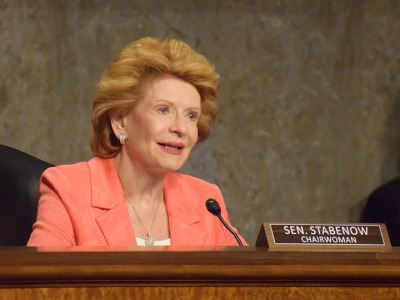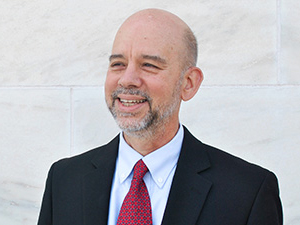The huge budget reconciliation bill Democrats are trying to pass would reshape a large section of the farm bill ahead of schedule, angering farm-state Republicans who fear it will be difficult to alter the dramatically increased spending allocations for conservation programs.
The agriculture provisions in the Build Back Better bill haven’t been finalized, and the size of the legislation is certain to be reduced as House and Senate Democrats negotiate a final version in the coming days.
But the impact of the legislation would be historic. A draft amendment to the bill would create $28 billion in new conservation funding to go with the $59 billion that USDA is already projected to spend from 2022 through 2031 under the 2018 farm bill, according to the latest Congressional Budget Office forecast.
That $28 billion in new money would represent the single largest infusion of funding into conservation since the Dust Bowl — slightly more than Congress added to conservation programs in the 2002 farm bill, roughly $26 billion in today’s dollars.
Current conservation spending averages about $5.9 billion a year, more than $2 billion of which goes to the land-idling Conservation Reserve Program, which would not be affected by the Democratic bill.
The impact of the new funding could help reduce ongoing backlogs while also enabling lawmakers to use the remaining money to permanently increase funding for conservation programs.
“What we’re doing is absolutely critical to respond to the climate crisis,” said Senate Agriculture Committee Chairwoman Debbie Stabenow, D-Mich. "There's a broad list of every part of agriculture and agribusiness and environmental groups that strongly support what we're doing.”

Senate Ag Committee Chair Debbie Stabenow, D-Mich.
But the committee’s top Republican, John Boozman of Arkansas, said Democrats are prematurely and unfairly reopening the 2018 Farm Bill on a partisan basis.
“This is them picking winners and losers," he said. "It’s an attack on the committee. It’s an attack on me. And we'll be fighting back with everything we can fight back with.”
His GOP counterpart on the House Ag Committee, Glenn “GT” Thompson of Pennsylvania, said the Democratic plan would have “significant political and financial ramifications, and further shows just how out of touch Democrats are with rural America and the needs of production agriculture.”
The money is designed to start flowing to USDA in fiscal 2022, allowing the Natural Resources Conservation Service to start whittling down a backlog of demand, particularly in the highly popular Environmental Quality Incentives Program. FY22 starts on Friday.
More significantly, the House and Senate Ag committees could take the rest of the money not spent in FY22 and FY23 to create permanent funding for the farm bill's conservation title. The current farm bill is due to be replaced in 2023.
Under congressional budget rules, money authorized through a reconciliation bill can’t be spent beyond a 10-year window, after 2031 in this case. But the rules that govern farm bills would allow the ag committees to get around the reconciliation restriction and permanently increase funding, or baseline, for conservation programs, experts say.
To do that, the committees would have to take the money authorized by the reconciliation bill and then spread it out over the 10-year period that would follow the enactment of the farm bill. Based on how the amendment is currently written, about $20 billion would be available to the committees to spend, starting in FY24.
“The long-term benefit is that if wise minds prevail in future farm bills, they can make this (the increased conservation funding) a permanent thing, not a temporary thing,” said Ferd Hoefner, an ag policy consultant and longtime leader of the National Sustainable Agriculture Coalition.
Interested in more coverage and insights? Receive a free month of Agri-Pulse West
Funding in the Democrats’ draft amendment is largely backloaded, potentially increasing the amount of money available to the ag committees when they write the next farm bill.
The Environmental Quality Incentives Program would get $9 billion under the legislation to fund practices and enhancements that reduce greenhouse gas emissions or sequester carbon. Of that amount, $800 million would be spent in FY22 and FY23.
EQIP has an enormous backlog that the funding would help reduce; in FY19, only 41,471 of the 149,574 applications received funding, according to the Congressional Research Service.

Ferd Hoefner
The bill also would make two significant changes for the new funding: An existing 50% setaside for livestock would be removed, and the limit on conservation innovation grants would be raised from $25 million to $50 million, with priority given to projects that use diet and feed management to reduce methane emissions from cattle.
Without the additional funding, EQIP is currently projected to cost $1.7 billion in FY22.
The Conservation Stewardship Program would get $4 billion in new funding to reward farmers for implementing at least one climate-smart enhancement or for carrying out state or regional-specific bundles of climate-smart enhancements. Producers can earn higher payments for implementing bundles of practices, such as conservation tillage and cover crops. Some $750 million of the CSP funding is earmarked for FY22 and FY23.
CBO currently projects the CSP program to cost just under $1 billion a year in FY22.
The Regional Conservation Partnership Program, which leverages private as well as state and local funding sources to carry out region-wide conservation projects, would be funded at $7.5 billion under the draft amendment, and is currently projected to cost just $223 million in FY22. The new legislation would provide an additional $200 million for FY22 and another $500 million in FY23.
Under the legislation, USDA would be authorized to prioritize RCPP projects that “leverage corporate supply chain sustainability commitments” or “utilize models that pay for outcomes from targeting methane and nitrous oxide emissions associated with agricultural production systems.”
The Agricultural Conservation Easement Program, which funds wetlands restoration and protection of farmland from development, would be funded at $1.5 billion under the legislation, with $300 million of that available in FY22 and FY23. The program is currently projected to cost $416 million in FY22.
The legislation also would create a new conservation program, run by USDA's Farm Service Agency, to pay farmers to grow cover cover crops, starting in FY22 and continuing through FY28. Producers would be eligible for payments of $25 an acre; owners who don't operate the farm could get payments of $5 an acre.
Maryland has had a similar incentive program for cover crops, but due to their cost, the payments had to be increased to well over $25 an acre to get broad interest from farmers, said Ray Weil, a soil scientist at the University of Maryland. A payment of $45 an acre is "pretty much enough to get everybody interested,” he said.
The Democrats’ amendment would also provide $600 million for USDA quantifying carbon sequestration; $200 million for conservation technical assistance and $50 million for USDA’s regional climate hubs. USDA also would receive $100 million for administrative costs.
For more news, go to Agri-Pulse.com.


